 |
| Boatmen manually gathering sand from under water PC: Kalirajan Subramanian |
During our visit
to Udupi few months back, we had taken a boat ride across the beautiful Swarna
river. It was a scenic morning and the sun was just beginning to ascend. As the
boat steered through the calm waters, we were enjoying the sight of wetland
birds, thick coconut groves and the quaint setting of a slow-paced coastal
town.
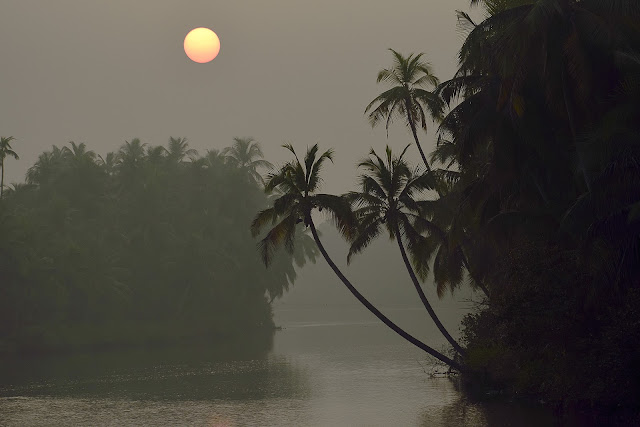
Sunrise on the Swarna River PC: Kalirajan Subramanian
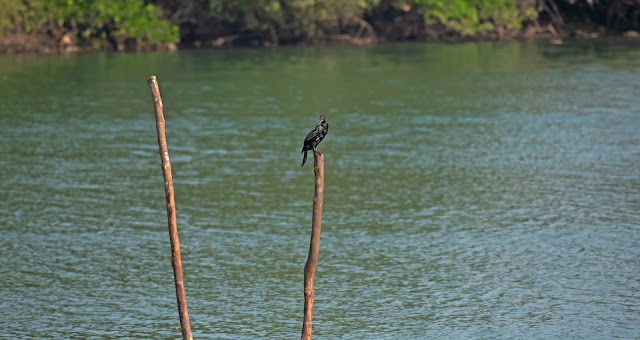
An Indian Cormorant (Phalacrocorax fuscicollis) looks for its catch PC: Kalirajan Subramanian
A short
while into the ride, we saw few smaller boats ahead of us, all hand rowed and
appearing as if about to submerge, as the edge of the boats were at the same
level as the flowing waters. Much to our wonder, the boatmen were relaxed and
continued to row leisurely. When our boat got closer to theirs, we understood
why those boats looked almost submersible…They were carrying mounds of sand,
river sand. Till then, we had heard of and read about sand mining, but now we
were witnessing the deed first-hand.
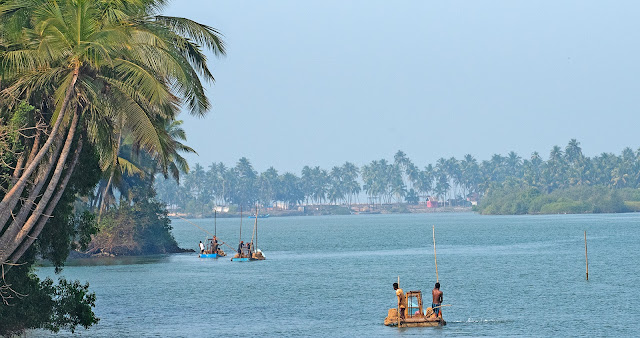
The boats that looked as if about to submerge PC: Kalirajan Subramanian
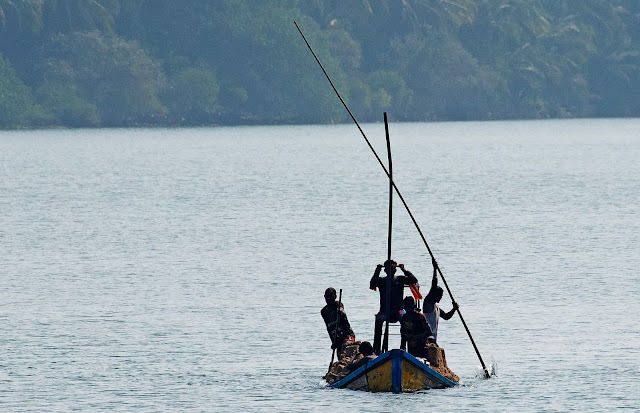
A party of sand miners PC: Kalirajan Subramanian
A birds-eye
view on sand mining - We all know that sand is an essential ingredient in
construction. The ratio in which cement and sand are mixed for construction
purposes is either 1:4 or 1:6. That implies, for every bag of cement we need 4
or 6 bags of sand! Sand is also used in industries for the extraction of
minerals like Titanium, Zirconium, Silicon and for the making of concrete, glass.
Traditionally sand was mined from open pits dug in barren lands or sand dunes.
Over time, as human population and demand sky rocketed, other sources such as
shorelines, river beds also got into the ambit of the suppliers. This led the
Governments and Environment regulatory bodies across the globe to lay down
norms to regulate the quantity and methods of mining sand from all sources. The
objective was to control the rate of depletion and consecutively the damage
caused to the ecosystem.
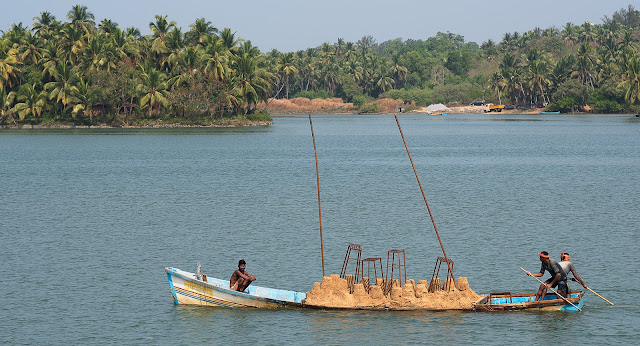
A truck waiting on the bank to transport the mined sand PC: Kalirajan Subramanian
Why is sand
so important in dunes, shores and river beds? Though most of us, if not all,
know the answers, listing it explicitly helps drive the point home, de novo.
The earth under our feet is made of sand. Sand is nature’s own bed for all life
forms. It provides a base for plants and trees to grow, it holds ground water,
provides habitat and shelter for countless insects, rodents, birds etc. Sand
dunes hold the storms, mitigate the otherwise catastrophic effects of cyclones,
climate change. Sandy shorelines mitigate inundation of main lands during high
tide or sea storms apart from being a vital habitat in themselves.




 |
| A truck waiting on the bank to transport the mined sand PC: Kalirajan Subramanian |

A small flock of Oriental White Ibis(Threskiornis melanocephalus) in flight above the Swarna river PC: Kalirajan Subramanian

Sand in the river bed is crucial to contain floods. It supports a thriving ecosystem of aquatic and riparian flora and fauna. Depletion of sand in the river beds is one of the major causes for the frequent floods that we see in India off late, during every monsoon. In-stream mining lowers the bottom of the rivers leading to soil erosion in the banks and consecutively flooding of the surrounding areas. This also widens the mouth of the rivers there by increasing the chances of saline water intrusion from the near by sea. This not only makes the river water in-consumable by humans but also seriously harms the fresh water ecosystem. In-stream sand mining weakens the base of man-made structures on the rivers, like bridges, leading to their untimely and often early collapse. We have seen instances of this from various parts of our own country.
 |
| Bridge collapse PC: https://www.thenewsminute.com/article/bridge-collapse-mangalurus-phalguni-river-locals-blame-illegal-mining-83715 |
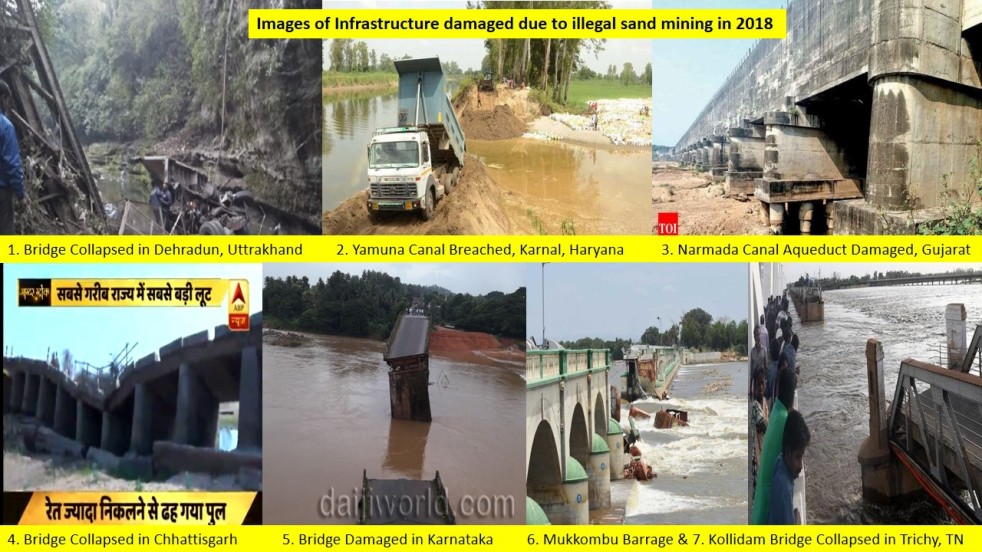 |
| Damages due to Sand mining PC: Internet |
That said, what we saw on the Swarna river made us sit up, brood and study about in-stream sand mining. It is a universal hazard to rivers around the world. Though the miners we saw were following norms like – not using mechanized boats or machines (yes, men risked their lives and repeatedly went under the water to heap buckets of sand on the boat), extracting post monsoon etc., the very act was thought evoking. Is development impossible without impairing the environment? What are the sustainable alternatives? At the forefront of all such activities, socio-economic inequality and poverty play a major driving force. How to plug this, in the larger interest of our planet? Can human race harness its collective acumen to enable the only known habitable planet thrive for posterity? Time for course correction, en masse.
Some interesting alternatives (will keep adding as I get to know more) -
https://www.thebetterindia.com/187863/uttar-pradesh-girl-quits-us-job-sustainable-homes-stubble-burning-india/
https://www.thebetterindia.
I have cautiously not listed M-sand as an alternative here, as first hand it is in turn made by crushing rocks and hence I am not sure how sustainable that is. Secondly, I have not yet come across any domain expert's recommendations of it based on extensive studies
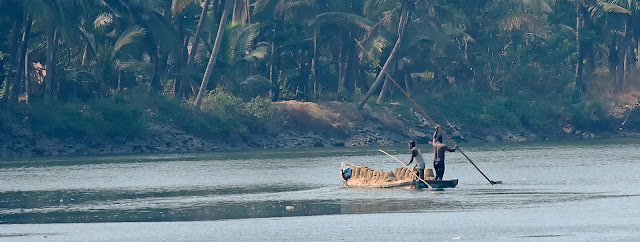
Heaps of mined sand on a boat PC: Kalirajan Subramanian
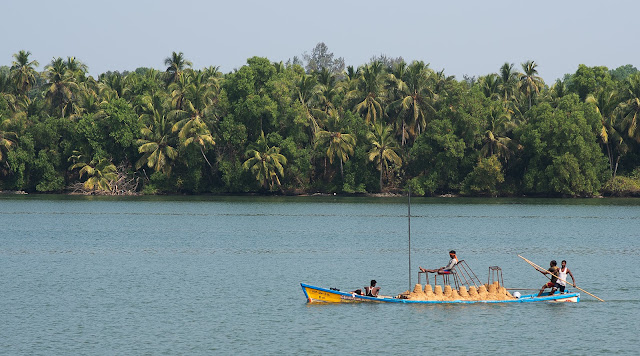
Time to stretch after all the manual hard work PC: Kalirajan Subramanian


Comments